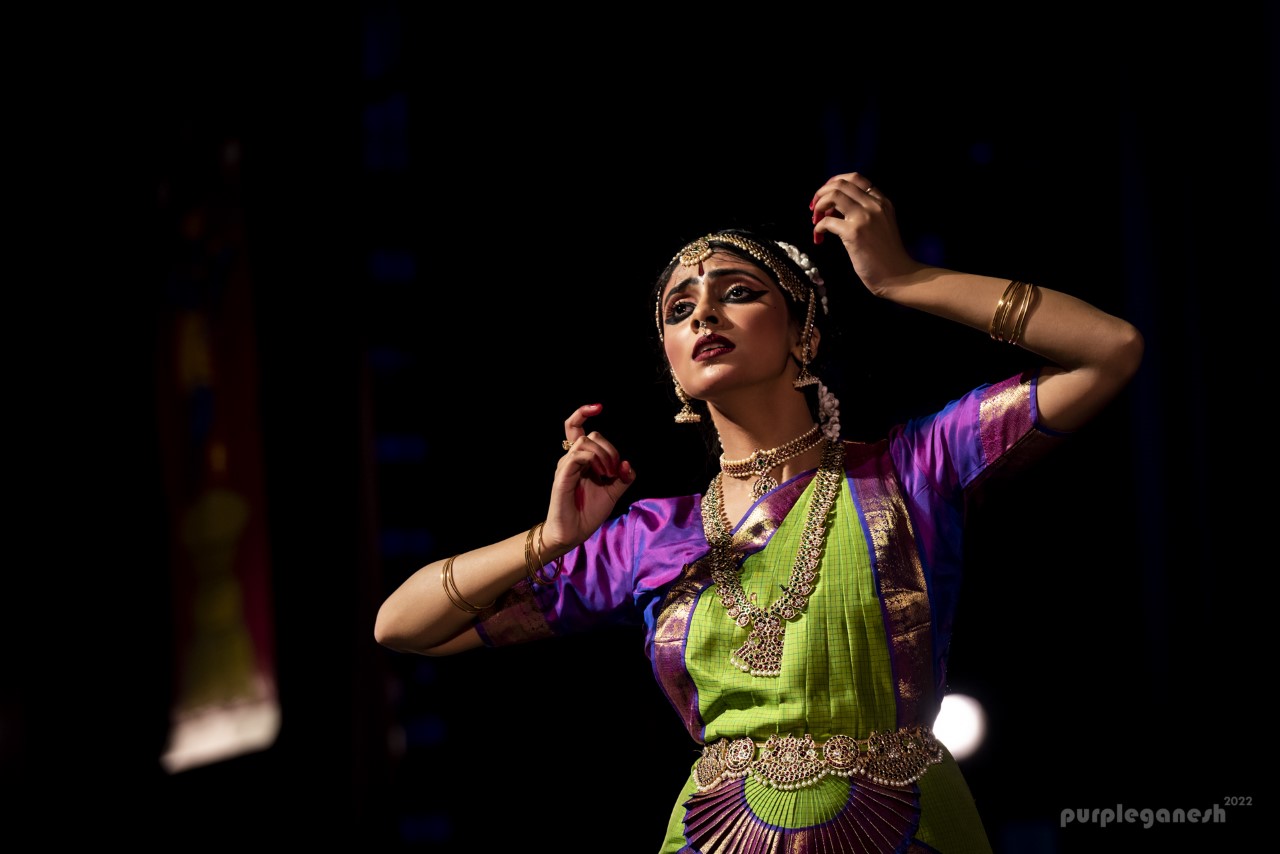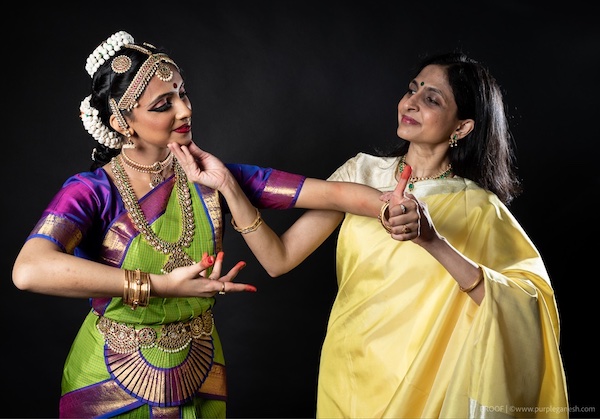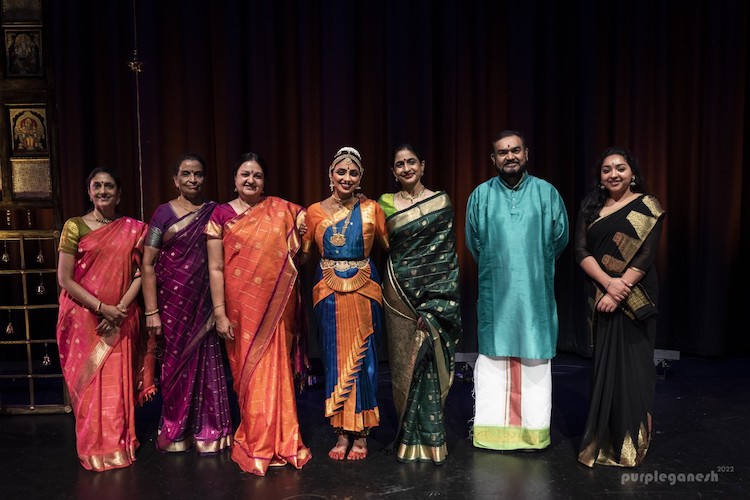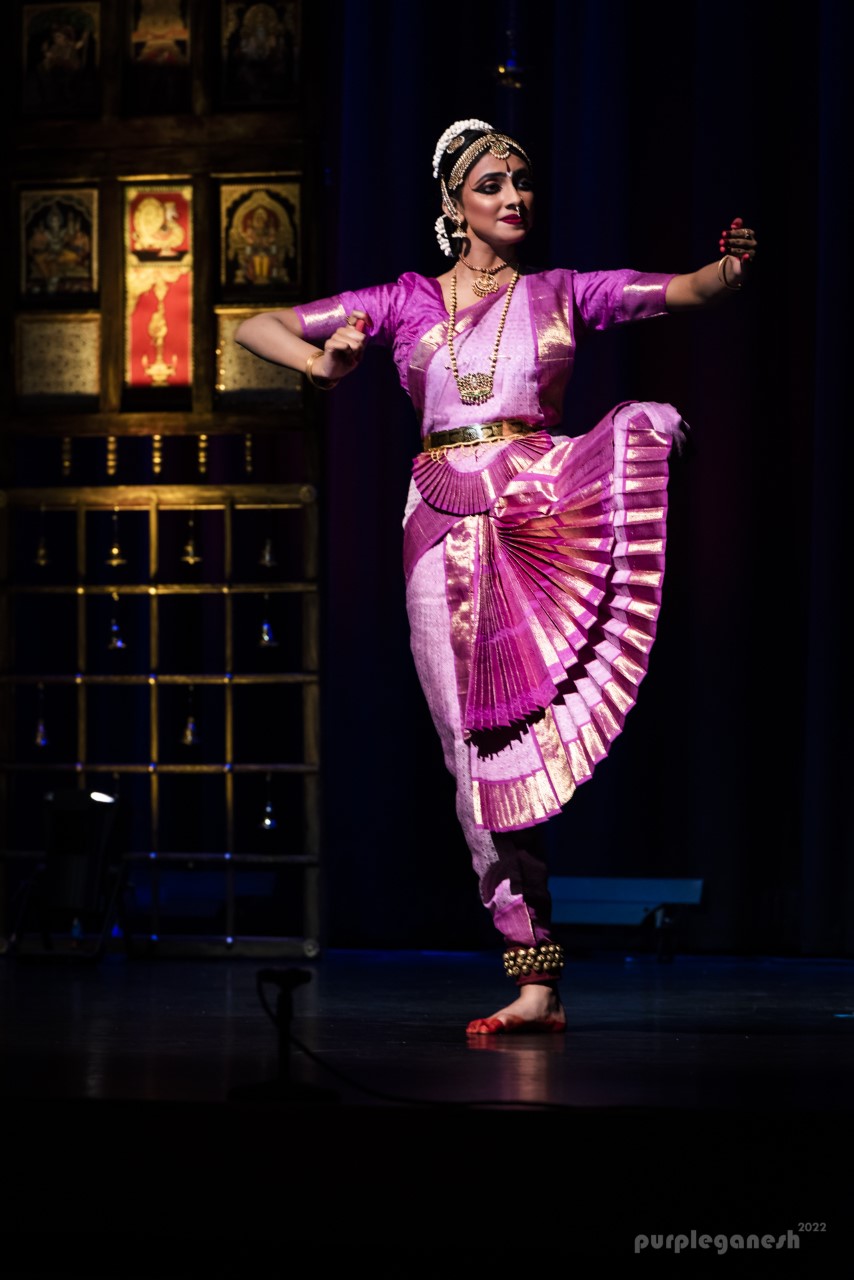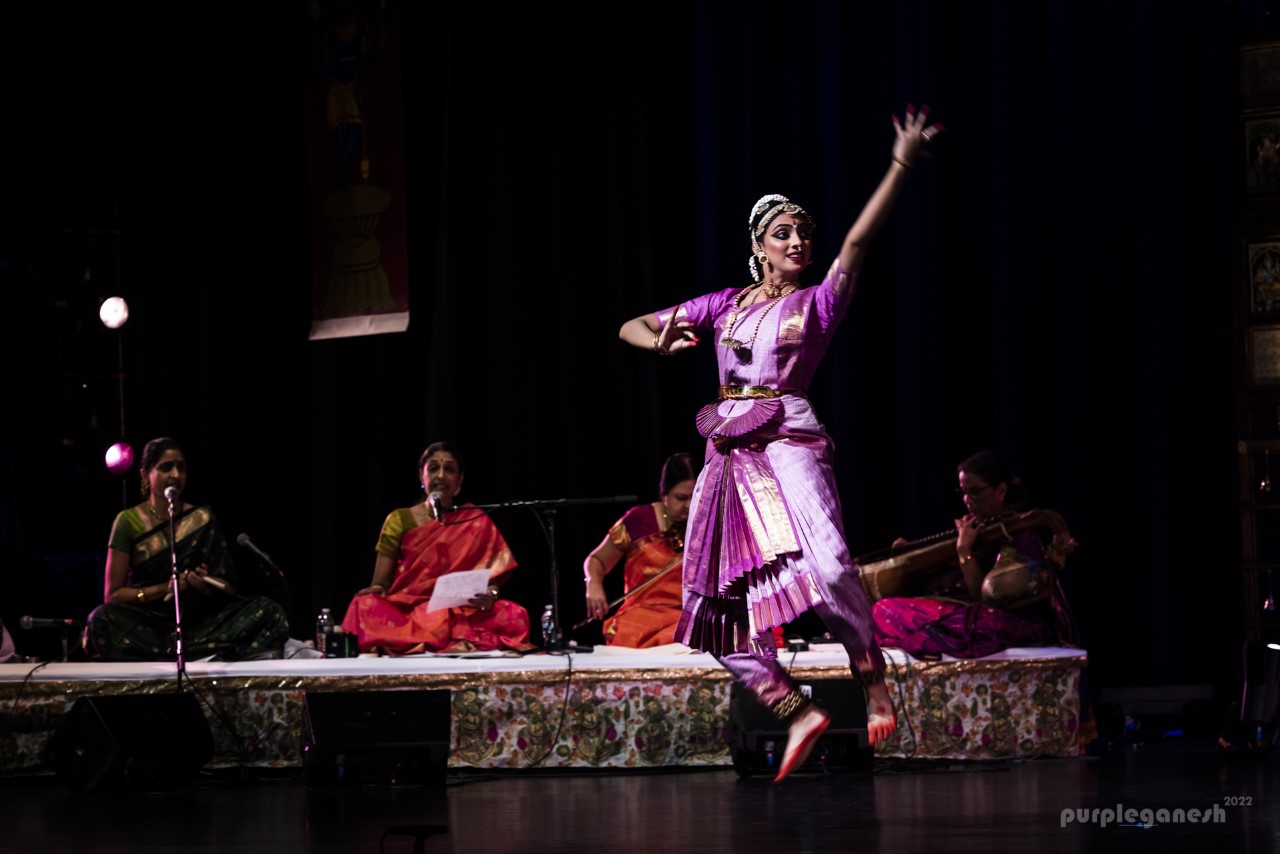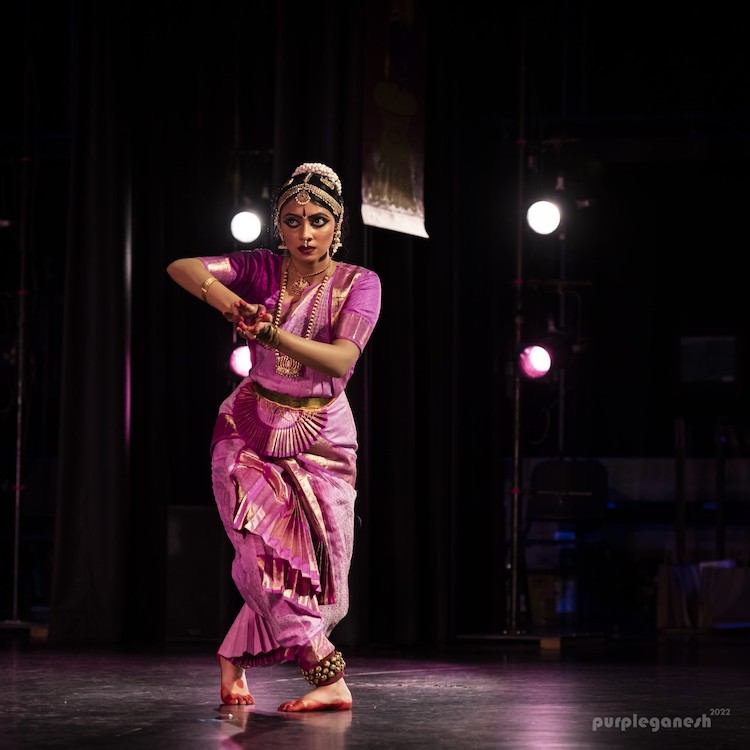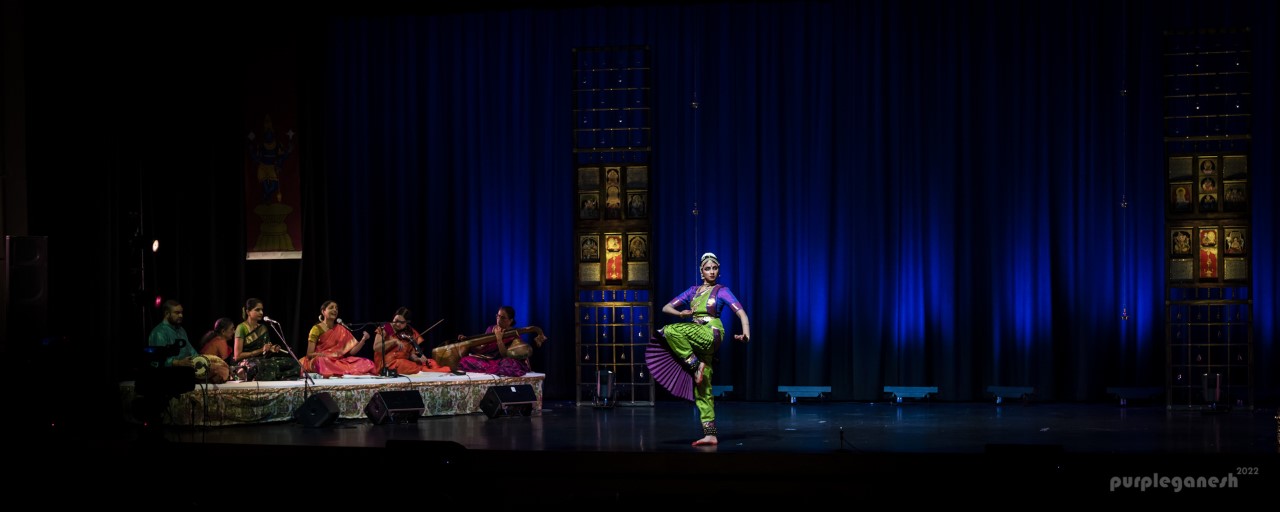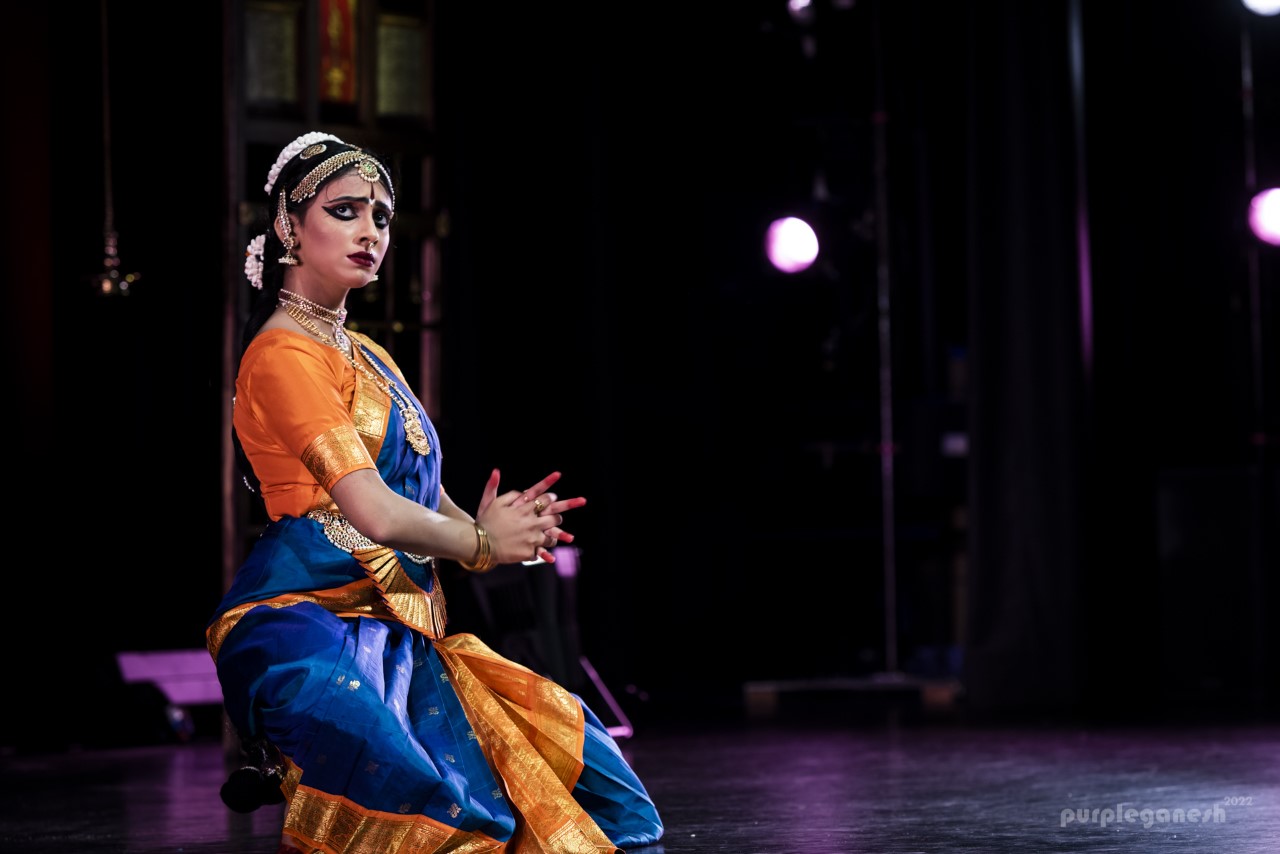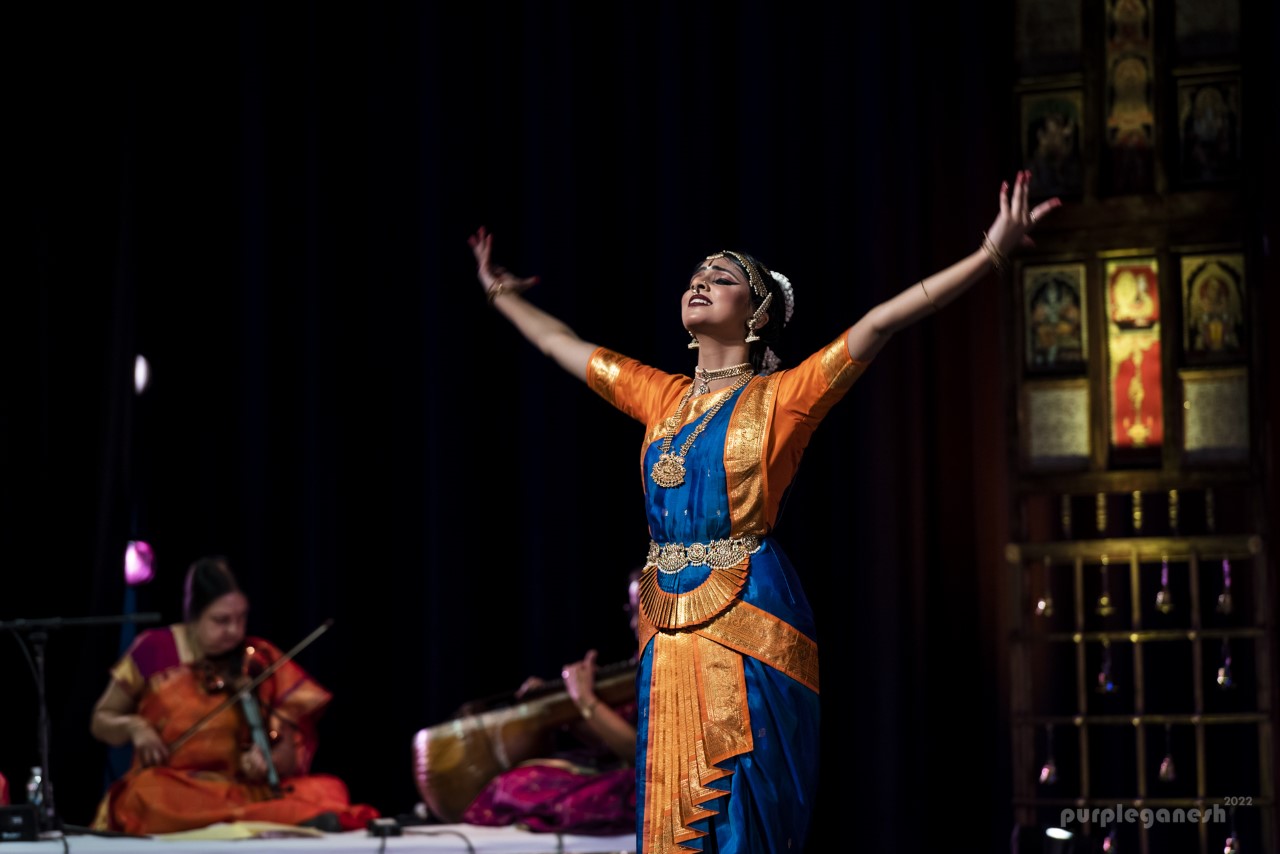Contribute
| Arangetram: Sharanya Baradwaj |
Deepa Rajesh
12/15/2022
Arangetram Review of Kum. Sharanya Baradwaj, Disciple of Smt. Sunanda Narayanan “Thillai Fine Arts Academy†“Sharanya did a beautiful job .. made me proud! Congratulations to Sharanya. (I) Wish I were there in person! Best wishes! God bless!†… Smt. Jothi Raghavan, Retired Artistic Dance Director of Nrityanjali School of Dance, Westford MA and Sharanya’s first bharatanatyam teacher “... She (Sharanya) did you and her teacher proud in every aspect of dance! My blessings and wishes to her to continue dancing throughout her life. She is a gifted dancer with an astounding stage presence. God Bless Sharanya!â€... Smt. Soumya Rajaram, Artistic Dance Director of Samskriti “The Bharatanatyam arangetram of young Sharanya Baradwaj, was a treat to our eyes and ears, and it stands out as one of the most memorable arangetrams I have had the pleasure of attending in the recent past. From start to finish Sharanya displayed a clear understanding of each piece she performed, exemplified through her intricate and mature expressions! Her hard work towards posture, footwork and poses were quite evident, throughout the program. Sharanya’s teacher Smt Sunanda Narayanan had chosen a very challenging varnam for the arangetram, yet I could witness the level of poise that Sharanya danced with, delivering it with fluidity and grace. The live orchestra added a whole new dimension to the performance greatly elevating it. I consider myself fortunate to have heard the beautiful music of Smt Sumitra Nitin, Sunanda’s sister. The musical expressions were beautifully enhanced by Smt Durga Krishnan on the Veena and Smt Tara Anand on the violin, both seasoned musicians in the New England area. The crisp jathis of the nattuvangam (Smt Sunanda Narayanan) were brought out with utmost clarity by Shri Toronto Gaurishankar, on the mridangam. From decorations to the costumes, a big hand for which goes to Smt. Mukundapriya, everything was fantastic. It was an arangetram to remember for multiple reasons. Sharanya has a bright future if she continues in the same path.â€... Smt. Aparna Balaji, President Abhyaas Inc., Music School, Billerica MA On a nice summer evening in June, it was great to actually get together with friends and family once again. This time, to celebrate and encourage young Sharanya as she stepped up to the stage to perform her Solo BharatanÄtyam Dance Performance, or ArangÄ“tram (Tamil for “ascension to the stageâ€). I’ve known Sharanya for several years now. She was always a very thoughtful, calm and focused child who backed her passion in any activity with a lot of hard work. So it was no surprise that this passion and sincerity shone through in her BharatanÄtyam arangÄ“tram on June 25th, 2022. Her teacher, Smt. Sunanda Narayanan, and her parents must be very proud of young Sharanya’s accomplishment that day. BharatanÄtyam is one of the most ancient dance styles in the world, with its origins going back to the NÄtya ShÄstrÄs. The artform’s name itself is a combination of 4 words – BhÄva (expression), RÄga (musical scales), TÄla (rhythm) and NÄtyam (dance), and it is extremely precise and dynamic. Its technique rests on 3 pillars – Nritta (pure dance), Nritya (interpretational dance) and NÄtya (expressional dance). The body movements, intricate footwork and eloquent expressions are set to Carnatic music with themes depicting stories from Hindu purÄnas, itihÄsÄs (historical events) and mahÄkÄvyÄs (epics). BharatanÄtyam is a complete artform that combines artistic expression with spirituality. Items are performed in a specific sequence referred to as a “MÄrgam†(path). On this occasion, the debutante presents her art to the divine dancer Lord Nataraja, her teacher, and the audience, seeking their blessings to further pursue this artform. That day, walking into Littleton school, where the arangetram was conducted, we were transported to another world. Friends and family had transformed the school's hallways into an Indian temple with 11-foot dwajasthambam, a carved balipeetam and 10-foot “carved†granite-like pillars with statuesque portraits and “embedded†stories and composer descriptions. A glance at the elegant brochure meticulously elaborated on why each piece of Sharanya’s margam for the day was chosen, shedding light on the theme for the arangetram. Most of the compositions were from the late 19th and early 20th century choreographed in pureform VazhuvÅ«r style and the decor reflected this theme of “pureform traditionâ€. The stage, decorated subliminally as a temple Garbhagruha with a 3-foot Nataraja idol and a projected gopuram of the Thanjavur temple and the divine music, lilting from the live orchestra transported the audience to yesteryear’s Chitsabha in the big temple at Thanjavur, all of which promised a transcending experience. The program started off with the traditional vazhuvÅ«r musical invocation piece - the Thodaya Mangalam in praise of the VazhuvÅ«r deities - this is the style of BharatanÄtyam that Sharanya’s teacher Smt. Sunanda Narayanan has been trained in and is propagating to her students. Sharanya briskly entered the stage, looking radiant and calm in a pretty lotus pink costume, a rare color on stage today, a throwback to a bygone era, furthering the harmony with the theme of “pureform traditionâ€. After that befitting musical invocation, Sharanya started off with a PushpÄnjali, an offering of flowers and salutations to the Lord, her teacher, the musicians, and the audience, seeking their blessings for her performance. This ragamalika pushpÄnjali, a composition of violin maestro Shri Lalgudi G Jayaraman, set to Ädi tÄlam on the three devis - Durga, Lakshmi and Sarasvati was a dynamic start to the arangÄ“tram. This was followed by a brisk nritta piece - the Alarippu (meaning the blossoming of a flower) in tisra nadai. BhartanÄtyam is rich and variegated, and a good performance brings out the richness of the art form as evident in the next piece. Sharanya next performed a very rare Manduka Shabdam that captured the rambling thoughts of a poet enjoying nature while the reverberating din of the Mandukam (frogs) in the pond steals his attention. An interesting note about this piece was that this was originally composed for Kuchupudi, and was later incorporated into the BharatanÄtyam repertoire by VazhuvÅ«r Ramaiah Pillai. A fabulous, enjoyable piece, dramatically choreographed and performed by Sunanda’s teacher, Smt. Rhadha, several times, executed flawlessly by Sharanya. Sunanda’s excellent nattuvangam, and Sharanya’s maturity in conveying the story of gajendra moksham were very poignantly captured in this rendition. Varnam, meaning “color,†is the central and most elaborate piece of a BharatanÄtyam performance. It integrates all aspects, showcasing the dancer’s expertise in both nritta (pure dance) and abhinaya (facial expressions). We had all come to glimpse at the various aspects of Sharanya as a dancer, but this would be the real test. This complex pada varnam, a ragamalika composed by Thanjavur Ponnaih Pillai set to Ädi tÄlam, brought out the Å›ringÄra rasa in the lovelorn voice of a heroine, completely smitten by and devoted to Lord Brihadeeswara and his temple in Thanjavur. Since the day she saw the temple chariot procession pass by her home, she fell deeply in love with Lord Nataraja (Shiva). In the thrill of that moment, she realizes her unbounded love for Him. Sharanya, in her green and purple costume, glowed in love literally and figuratively, longing for her beloved Lord Nataraja. Longer than most pada varnams (~45 mins), it was impressive to see Sharanya deliver on both the nritta and abhinaya so well. Sringara rasa is tough to express even for an accomplished dancer, and watching Sharanya express so effortlessly would create doubt in anyone’s mind about this being a debut performance. Smt. Sunanda’s ability as an accomplished dancer and teacher is very well-known and does not need much introduction. However, what must be mentioned here is her keen ability to know each of her students well, their strengths, their weaknesses and helping them overcome the latter to sparkle as a star. This takes time, extraordinary commitment, a deep love for the art and a unique bond between the teacher and the student. That bond was in full display in the intricate choreography that Sharanya, to her credit delivered with poise and grace. This varnam highlighted Sharanya’s ability to juxtapose nritta, nritya and abhinaya for effective storytelling. The clarity of footwork, the subtle attamis, the lightness of movement and sculpturesque poses, quintessential to vazhuvÅ«r bani, were just scintillating. As for abhinaya, Sharanya was fully in the character of the nayika, which left the audience feeling the pang of the nayika’s separation from her Lord to grab a lot of kleenex tissues to wipe their tears. I should also note that such a complex varnam was almost entirely taught by Sunanda over zoom, at the height of the pandemic - another testament to the strong bond between the teacher and student. Sharanya’s amazing stamina did justice to Sunanda’s lively nattuvangam, and the entire piece was a treat to watch. I would be doing a dis-service if, at this point, I didn't mention the superb orchestra and what it took to make this varnam truly special. The vocalists were none other than Sunanda’s sister Smt. Sumitra Nitin - a very accomplished musician and dancer herself, and Sunanda’s mother Smt. Sujatha Vijayaraghavan, another well recognized musician. This made the ensemble extra special for everyone. The orchestra accompanying these wonderful vocalists providing all the special effects for this varnam were our own New England stalwarts - Smt. Durga Krishnan on the veena, Smt. Tara Anand on the violin. Sri Gowrishankar Balachandran from Toronto on the mridangam made the special mridanga jatis of this varnam that much more interesting and powerful. After a brief, but delicious snack break, we came back to the more emotive half of the arangÄ“tram. Starting this half off was my personal favorite - Thedi Paninden in rÄgam Hamsadhwani, a lovely composition on Lord Krishna by Smt. Ambujam Krishna. This was a piece personally picked by Smt. Sujatha Vijayaraghavan for the arangÄ“tram of Sunanda and Sumitra, so Sharanya indeed was very fortunate to be doing this. This piece started with a sprightly swaram composed by Smt. Sumitra Nitin. Sharanya’s excellent footwork brought to life Krishna’s dances through his different pranks and escapades culminating with the snake, Kaliya’s defeat. The stunning peacock blue and bright orange costume that Sharanya adorned added pizzazz to the mood of this half of the arangetram. In the popular jÄvali Nee Maatale Maaynura in rÄgam Purvikalyani, composed by Pattabhiramaiya, Sharanya so naturally and effectively explored various emotions experienced by the feisty heroine upset with her man who had made several promises of jewels and gifts to her, all of which he had broken. The penultimate piece, Bharati Sunaathan Ellihaw, was a very special tribute from the lovely teacher- student duo to Sharanya’s maternal great grandfather C. M. V. Jayeendrachar, who was posthumously awarded the “HaridÄsĆtitle by Pejavara Mutt Swamiji Sri Sri Vishwesha TÄ«rtha. This Devarnama tuned as a folk melody in a range of ragas derived from Sindu Bhairavi was composed by Smt. Sumitra Nitin for this occasion. A very unique, spiritually uplifting piece superbly choreographed by Sunanda - this portrayed a conversation between two women about the high tenets of Madhwa philosophy. Sharanya very gracefully depicted Lord MukhyaprÄna (popularly known as Vayu BhagavÄn) taking the avatar of HanumÄn, BhimÄ and MadhvacÄryÄ in the service of Lord Narayana, during various epochs of time, guiding us to live righteous lives. Smt. Tara’s violin in background, when Sharanya showcased Hanuman’s quick wit by entering and exiting Demon Surasa’s mouth to win the challenge, created drama and complemented Sharanya’s comedic timing eliciting laughs from the audience. Sharanya concluded with an old, uncharacteristically slow TillÄnÄ (Chenchurutti in Ädi tÄlam) composed by Veena Seshanna of the Mysore Courts and a very melodious mangalam in MadyamÄvati on Goddess Andal thanking the Goddess, her teacher, the orchestra and all her well-wishers in the audience for supporting her through the successful completion of her ascension to the stage. As we watched all the pieces that Smt. Sunanda described, and how they related to her own arangÄ“tram, we all really got a glimpse of Sunanda’s own arangÄ“tram performance, particularly since her mother Smt. Sujatha Vijayaraghavan as well as her sister Smt. Sumitra Nitin also performed on stage that day, in different roles however. Sharanya really made her teacher and parents proud and she entertained us with an excellent solo debut performance. As Sunanda herself said, a good performance is not possible without the able support of a really great orchestra, with everyone providing their comments for embellishing the entire repertoire and cheering Sharanya along. All that was promised when we entered the school was now realized, we, the audience, were transported and transcended to the realm of the Chitsabha at Thanjavur. An arangÄ“tram by itself is a moment of personal accomplishment for a child that we should all be proud of. Sharanya’s speech and vote of thanks at the end was very special to all of us. I had always thought of Sharanya as a child, but it just dawned on me that she had grown to be a young, blossoming dancer. She spoke from her heart and her passion and love for the art and respect towards her teacher shined through. I wish Sharanya great success as a dancer and in all art forms that she chooses to pursue. I am very proud of her achievement and wish her the very best in all her endeavors. Following are some comments and wishes from dance teachers and artists, who attended the arangetram online or in-person. “I wanted to congratulate Sharanya and your family for a wonderful arangetram yesterday. I really enjoyed the program and spoke to Sunanda akka this morning for a long time. A very aesthetically presented arangetram and Sharanya did justice to the vazhuvoor bani. Goodluck for the future!!†... Smt. Aishwarya Balasubramanian, Artistic Dance Director of Arpanam School of Bharayanatyam, Billerica MA “Sharanya was absolutely mesmerizing onstage. She held the audience captive for her entire performance, keeping the tempo from start to finish. Her posture, Abhinaya, and footwork were perfect; she never missed a beat. Sharanya has the ability to share the story of a dance through her Abhinaya so well that even a person without prior knowledge of the art could understand. During the Varnam, which is the main piece in an Arangetram, dancers tend to lose their composure. Sharanya, however, excelled, performing intricate jathi pieces between the charanams with ease. Overall, Sharanya's dancing was a riveting experience and a true treat for all.†... Smt. Savitri Vaidhyanathan, Artistic Director of Abhinaya Dance Academy, Paoli, PA “It's been years since I saw the traditional varnam, “Sami ninne koriâ€. Her “chenchurutti†thillana jathis were beautiful and her alarippu clearly represents the vazhuvoor style. Thalam is very strong for Sharanya. Many congratulations to Sharanya.â€â€¦ Smt. Kalaimangai Anbalagan, Founder AmudaSri Dance School, Shrewsbury MA Enjoyed the varnam, Sharanya, excellent clarity and execution! … Smt. MariShakti Muthuswamy, Artistic Director of Anvita Natyalaya, Newton MA Mind-blowing Varnam. It was a treat to the eyes. Absolutely awesome! Flawless footwork and excellent bhava. Scintillating performance Sharanya! God bless you! ... Sarayu Ramana, Dance Enthusiast from Chennai A note of thanks from the parents, we express our sincere thanks to everyone for having made this arangetram a grand success. We have learned so much during this event and it has been a great experience organizing this event, along with so many friends and art lovers. We are very fortunate and thankful to be part of this art loving community and Thillai Fine Arts family… Mukundapriya Ramanan and Sanjay Venkatraman - Review by Deepa Rajesh
You may also access this article through our web-site http://www.lokvani.com/
